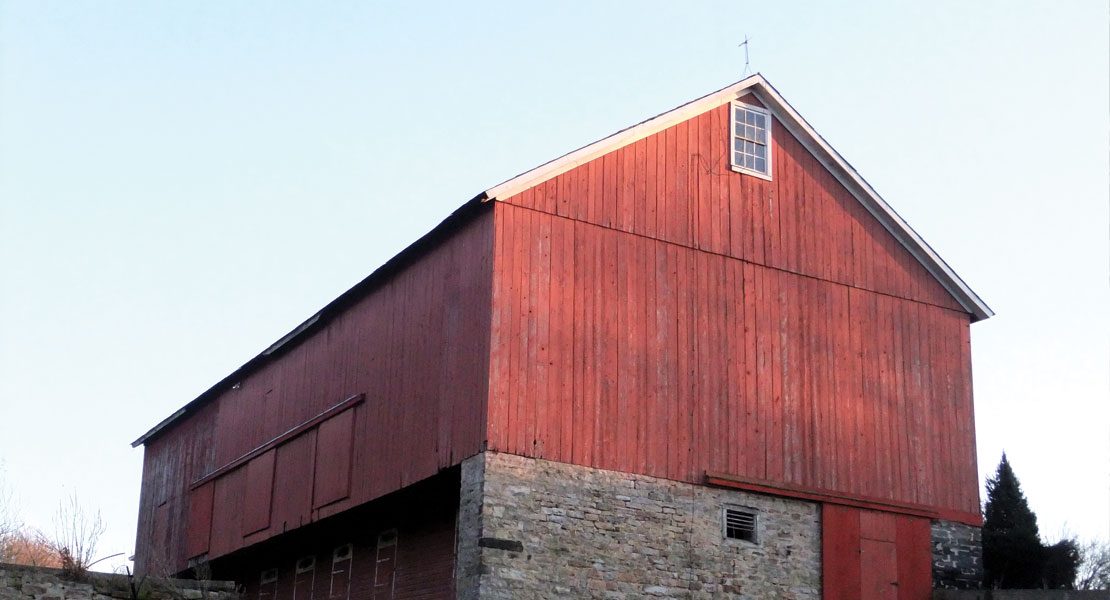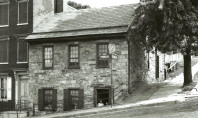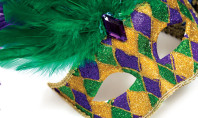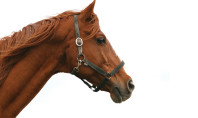Barns of the Lehigh Valley

By Nancy Moffett
You see them all around the Lehigh Valley. Some have been lovingly preserved. Some have been put to new uses. Others stand silently deteriorating along rural roadsides. But these barns are all testament to the heritage of our beautiful valley.
The Lehigh Valley was home to the Lenni Lenape tribes when the first Europeans arrived in the early 1700s. Many settlers moved north from the Philadelphia area seeking good farmland. Advertisements also drew people from Germany as early as 1730. Thousands more came during the 1800s, most to take up farming.
Diversity of crops was the characteristic of these farms. They grew oats, wheat, rye, buckwheat, hay and potatoes. They raised dairy and beef cattle, chickens, pigs and horses. Many also had fruit orchards.
The barn was at the heart of every farm, no matter what was produced. It stored crops and housed livestock. Most of the barns still standing in the Lehigh Valley were built between 1810 and 1940. The earliest barns were built of logs by hand. These were replaced by stone and log. By the 1860s about 95 percent were being built of frame and stone. One of the earliest barns remaining in Lehigh County stands in Upper Milford Township and was built in 1780.
Greg Huber is an architectural historian and owner of Past Perspectives and Eastern Barn Consultants, companies that research historic houses and barns for property owners. He is generally regarded as the nation’s leading authority on 18th and pre-Civil War era 19th century barns in the northeast.
Huber says that barns can tell us much about the ways of farmers who worked the land in the past 250 years. “These are the connections to the past that for many of us do not have too much reality,” he explains. In a foreword to “Barns: A Close-Up Look” (2011 by Fox Chapel Publishing) he notes that the barn “was absolutely critical for cultural development, given that man could not have progressed from a nomadic lifestyle to a civilization had he not developed this instrument of storage.”
In 2013 Huber studied and recorded the locations and the various structural types of 1,650 remaining barns in Lehigh County, doing a road-by-road windshield survey. Barns have been rapidly disappearing across the valley. By Huber’s estimate there were 3,000 to 4,000 barns in Lehigh County alone still standing in the first quarter of the last century.
Types of Barns
The earliest barns in the Lehigh Valley were one-level structures called ground barns. They were built as early as about 1730 and into the second quarter of the 19th century. None of the 18th century log ground barns are still standing, and the last 19th century one, in Heidelberg Township along Mountain Road, was removed in early 2013.
The most common barn type in the Valley is the Pennsylvania fore-bay style barn. This style consists of three construction modes – the Sweitzer, Standard and Extended barn. Sweitzer barns were built from about 1780 into the mid-19th century. They have two stories and asymmetrical roofs that end at their front sides in a seven-to-eight-foot overhang, or fore-bay. According to Huber, about 30 Sweitzer-style barns have been recorded in Lehigh County in the past 12 years, many of which survive. Sweitzers are far more common in Lancaster and Lebanon Counties.
More often seen in the Lehigh Valley are Standard barns. They also have a fore-bay at the barn front, but the roofline is symmetrical and the fore-bay is included within the barn’s interior framework. They were first constructed in the 1790s, continuing until the early part of the 20th century. The fore-bay is usually not as deep as that seen in the Sweitzer, and often measures about four to five feet in width. Standard barns usually have stone or frame gable walls. The framing units on the upper floor levels are called “bents.” They consist of timbers with vertical posts, horizontal beams and very often have diagonal braces.
Extended barns are most often structures that have been enlarged by amending the barn beyond the basic Standard barn framing. This added front barn section is called a straw shed. As farms became more productive, Extended barns were needed to accommodate more storage of farm crops and perhaps some equipment.
A feature of many Pennsylvania fore-bay barns is a bank or ramp on the opposite side of the fore-bay that allowed farmers to drive loaded hay wagons directly into the second or upper floor level of the barn. If there was no hill the barn could be built against, an earthen bank or bridge was built. The earliest fore-bay barns were likely built of logs, but most standing today are made of stone and frame. A few were constructed of brick.
Barn Decoration
Many area barns are adorned with “hex signs.” These round paintings bearing geometrical designs are exclusive to the non-Amish Pennsylvania Dutch. Theories on why farmers painted them on their barns range from bringing good luck to warding off witches. However, it is generally agreed that their origin was European, brought here by German immigrants. According to Huber, there really is no definitive reason for them. They began appearing on area barns as early as 1810 but became more common after the Civil War, when paint became less costly and farmers began painting the wooden barn walls.
Where to See Barns
There are several “public” places to see examples of Sweitzer, Standard and Extended barns without having to stop along country roads.
The Valley Preferred Cycling Center
1151 Mosser Road, west of Trexlertown
(Two barns on the grounds, a circa 1810 Sweitzer and a circa 1850 Standard)
Lower Macungie Township Building
3400 Brookside Road, Macungie
(The Schantz Standard barn is dated 1846)
The Rodale Institute
611 Siegfriedale Road, Kutztown
(A stone-to-the-peak circa 1850 Standard barn fairly close to the road and a frame barn circa 1875 further into the property)
Cedar Creek Parkway West
Cedarbrook Road, South Whitehall
(Standard barn near the Cedarbrook Road entrance)
To learn more about Lehigh Valley barns and Huber’s services, visit Eastern Barns at easternbarns.com or Past Perspectives at past-perspectives.com. Also recommended is “The Pennsylvania Barn: Its Origin, Evolution, and Distribution in North America,” by Lehigh Valley author Robert F. Ensminger, Johns Hopkins University Press.

















